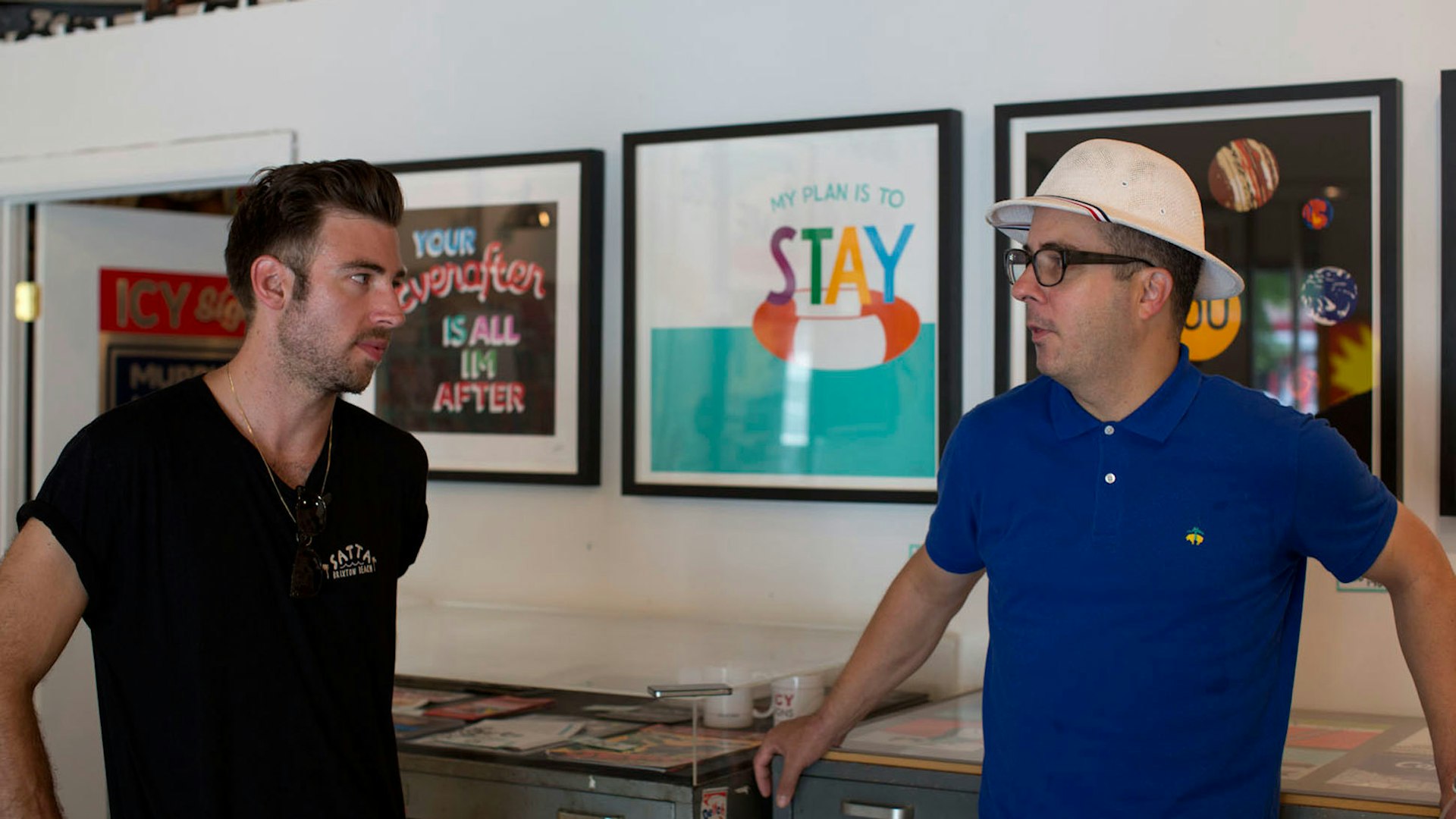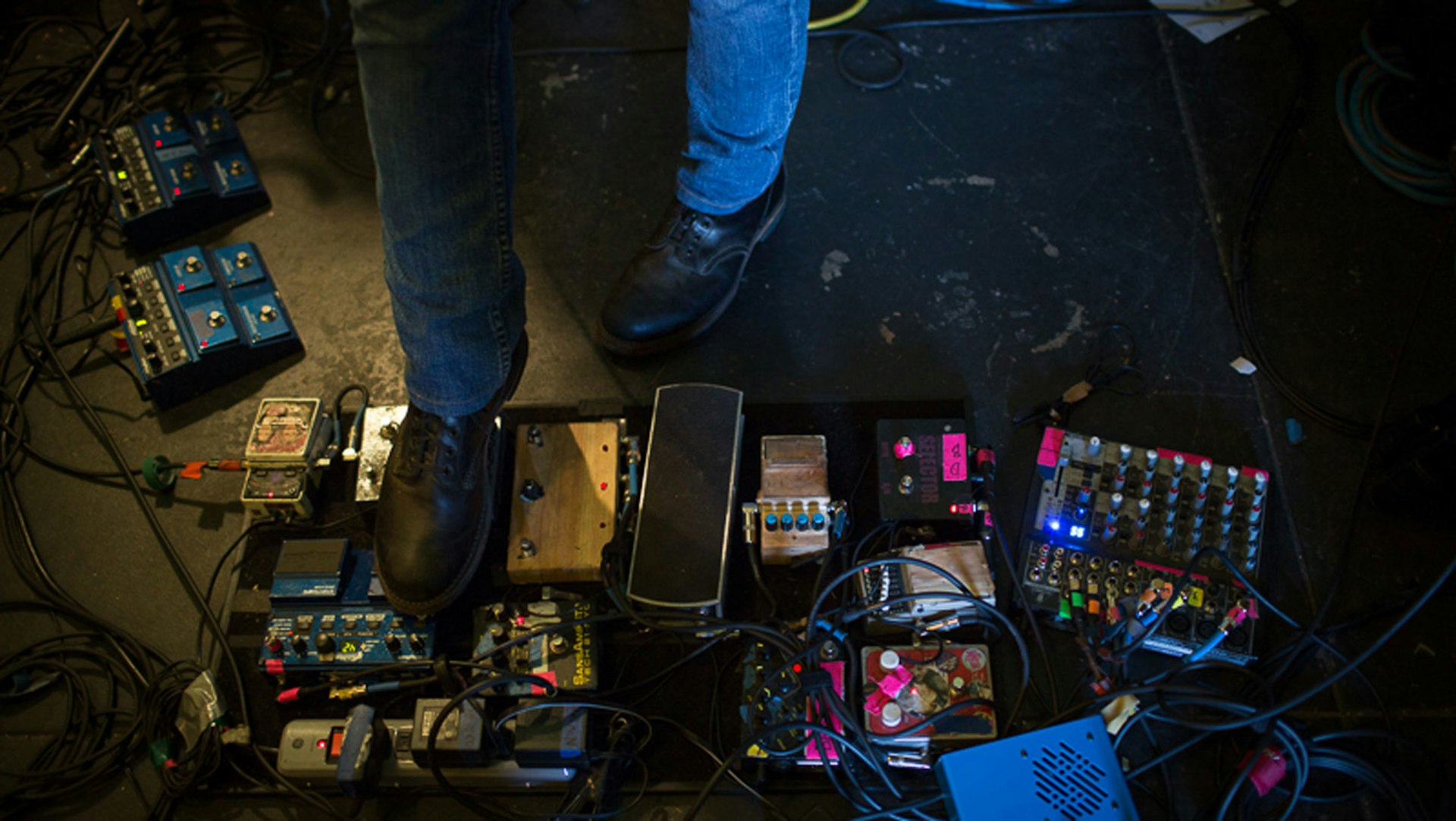
Stephen Powers & Stevie Gee
- Text by HUCK HQ
- Photography by Will Robson-Scott
When the two Steves, Stephen Powers & Stevie Gee, came together in July this year for a group show Folklore – a grand ode to handcrafted work curated by Evan Hecox at Joshua Liner Gallery, New York – HUCK photographer Will Robson-Scott was there to capture the exchange.
With the vision of the show – featuring original treasures by Thomas Campbell, Andy Jenkins, Geoff McFetridge, Ed Templeton and more – burnt on their eyelids they retreated to Stephen Powers’ studio ‘Icy Signs’ in Park Slope to continue the conversation. But work-banter, in this context and with credentials like theirs, is anything but inane.
Stephen Powers is a New York City artist with firm Philly roots who made a name for himself in the 1990s as ESPO – a graffiti tag that he once scrawled across cityscapes on abandoned shopfronts and disused metal grates, usually alongside artist Todd James, whose moniker was REAS. Stephen’s take on public space always came with a smile – “I’m with Exterior Surface Painting Outreach, and I’m cleaning up this gate!” – and that same energy and wit still informs his work today. He’s shown at the Venice Biennial and New York City’s Deitch, spoken out against political torture with a Coney Island installation titled ‘Waterboarding Thrill Ride’, and spearheaded a mural project that saw forty-plus artists scrawling a giant love letter across Philadelphia. Fellow Philly boy Kurt Vile had ESPO painting walls in their home city for his latest album cover. And now, having set up street signage studio ICY Signs in Brooklyn, his folk-inspired fonts are both his business and his art.
Stevie Gee meanwhile is a UK illustrator and artist whose humour and work seems to resonate across the pond. He may have grown up in leafy Essex, but with a bona fide Pearly King for a grandfather, his work marries Cockney wit with California cool. Think John Travolta’s leather-clad sleaze meets surf culture’s psychedelic past – chuck in rabbits on bikes, titties that talk, and high-energy puns charged with gnar (‘Stay Tight Like Dynamite!’) and you’ll soon get a sense of the Stevie Gee way. Clients dig it – Paul Smith, Patagonia and Band of Horses have all had the Gee treatment – and if his Folklore contribution is anything to go by, Stevie’s on the verge of blowing up.
Bringing together their unique experiences from either side of the Atlantic, the two uniquely positioned artists were able to compare and contrast what it means to produce Beautiful Losers-esque work in 2013 and the challenges that are thrown up along the way.
Here’s a little extract of the gems they unleashed.
“Stevie Gee: I’ve just done a bunch of stuff for a big brand and it pays really badly. I just don’t find it satisfying. My personal work often has stories behind it – like with Rainbow Riders, which started off as this leather jacket that I painted that then became a series of prints. I made up this back-story: there was a Mexican guy, an Asian guy, a black guy and a white guy and they kind of represented ethnic diversity. They lived during this mythical time in the 1950s when there was racism flying around and they got together through skateboarding and created a crew. They’d ride around on these rainbow boards, wearing crazy leather jackets that said ‘Rainbow Riders’. I love telling stories and people find it interesting – I hope. Even if they don’t, I like telling them.
Stephen Powers: Stories matter. I got in touch with Kurt Vile because people in Philadelphia approached me about possibly doing another project down there. We painted A Love Letter on the Westside [a series of murals painted by local youth and other artists], but there’s an Eastside on the train line that is much more industrial and has many more opportunities for painting. The neighbourhoods are all really interesting, but they have to be navigated.
And that’s the core story that I wanted to tell. You see, one of the great things about graffiti was that black, white and Puerto Rican kids all got together and did it without judgement. They might talk a lot of funny shit about each other, but when it came time to go paint, they went paint. We were all interested in exploring neighbourhoods and exploring cities, that’s what it was about, and the only way you could do that was by being cool with everybody you came in touch with and getting through [their neighbourhood]. It was a problem I wanted to address. I was like, if they ask me, ‘What would you do in Philadelphia that you’ve never done before?’ I’d say, ‘You know what? I’d like to start dealing with the problem of racism,’ because it’s just like this dumb stumbling block. I mean Philadelphia is a wildly, wildly diverse place, almost as diverse as New York. But people stay in their own yards, behind their own fences in their own blocks and their own neighbourhoods. For a city that is called the city of brotherly love, it was really hard to find that.”
You can buy HUCK Issue 40 with the full interview here.
